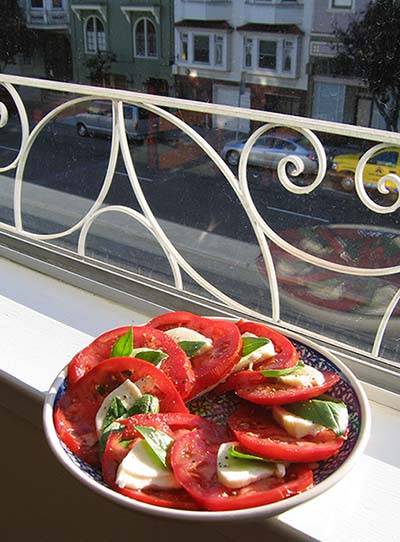 Grabbing local food on the road used to be easy. Mom and pop diners featured pies made from local fruit and barbecue joints smoked locally raised pork. But somewhere it all went horribly wrong as we were convinced that homogenization was the key.
Grabbing local food on the road used to be easy. Mom and pop diners featured pies made from local fruit and barbecue joints smoked locally raised pork. But somewhere it all went horribly wrong as we were convinced that homogenization was the key.
Food is a big part of culture. Eating the local food of other towns and regions helps us celebrate our differences and appreciate our similarities. Some cities are blessed with great local food cultures. San Francisco, New Orleans, Kansas City, and Charleston immediately come to mind.
But what if you are headed to Beloit, Wisconsin? Thankfully more chefs and grocers are realizing the value of what is growing in their own backyards, some literally. Similarly, Illinois is one of many states now dotted by local wineries and breweries. Many of these operations are small with accordingly small marketing budgets, so finding them isn’t always easy.
Some states have stepped in to help promote local purveyors. Programs like SavorWisconsin.com, which was developed by the Wisconsin Department of Agriculture, Trade and Consumer Protection; University of Wisconsin Extension; and the Wisconsin Apple Growers Association make it easier to pick up a picnic from a local farmers market or farm stand.
Federally funded promotion programs like the ATTRA — National Sustainable Agriculture Information Service — are funded with grants from the United States Department of Agriculture’s Rural Business-Cooperative Service.
As you peruse the ATTRA listings you will quickly see that some states and organizations do a better job of making it easy to research local food than others. What you may not see are all the places that you could potentially get local food.
This is because many local food websites are managed top-down. Often overburdened staffs or temporary interns collect and post local food data on these sites. Take a look at the number of growers at the Urbana Farmers Market this year versus last year and you begin to realize why this is a problem. Sites that are updated once a year may not list all farms. And as some farmers switch from land lines to cell phones, contact information also can quickly become outdated.
Allowing local food vendors to update their own listings not only is better from an accuracy stand point, it is more efficient cost-wise, as well. One of the first people to realize this was Guillermo Payet of Local Harvest. Payet started LocalHarvest.org as a pro bono project of his web development company Ocean Group. But what started as a project to help a handful of California growers has grown into the most comprehensive listings of farms, farm stands, farmers’ markets, restaurants, groceries/coops, and community supported agriculture projects selling local food in the U.S.
Payet’s site is the go-to resource for local food not only because of its size, but because its search capabilities are second to none. You can search by grocery, farm stand, restaurant, or even by specific crops. In addition to interactive maps, it relies on zip code information provided by the members themselves. So, if a farmer farms in one town, but operates a farmstand or a community supported agriculture program in another, you can find him/her under both zip codes. Payet will be the first to volunteer that the latter is accomplished by simply adding an extra field in website’s database. However, it is Payet’s willingness and passion to constantly tweak the site that helps to set Local Harvest apart. Over the years, he’s added a newsletter, discussion forums, calendars, as well as offered farmers the ability to sell online for rates under typical credit card merchant fees. When Prairienet took its list-serves dark in December, Payet stepped in to adopt the national farmer list-serve csa-l it formerly hosted. Local Harvest is now a self-sustaining entity with 18,362 listings, 54 of which were added just today, including 27 farms, 54 farmers’ markets, and 1 grocery store.
So check out Bushel & Peck’s café when you are in Beloit, or any of the other 18,361 options you have for local food when you travel. Local Harvest has you covered.








